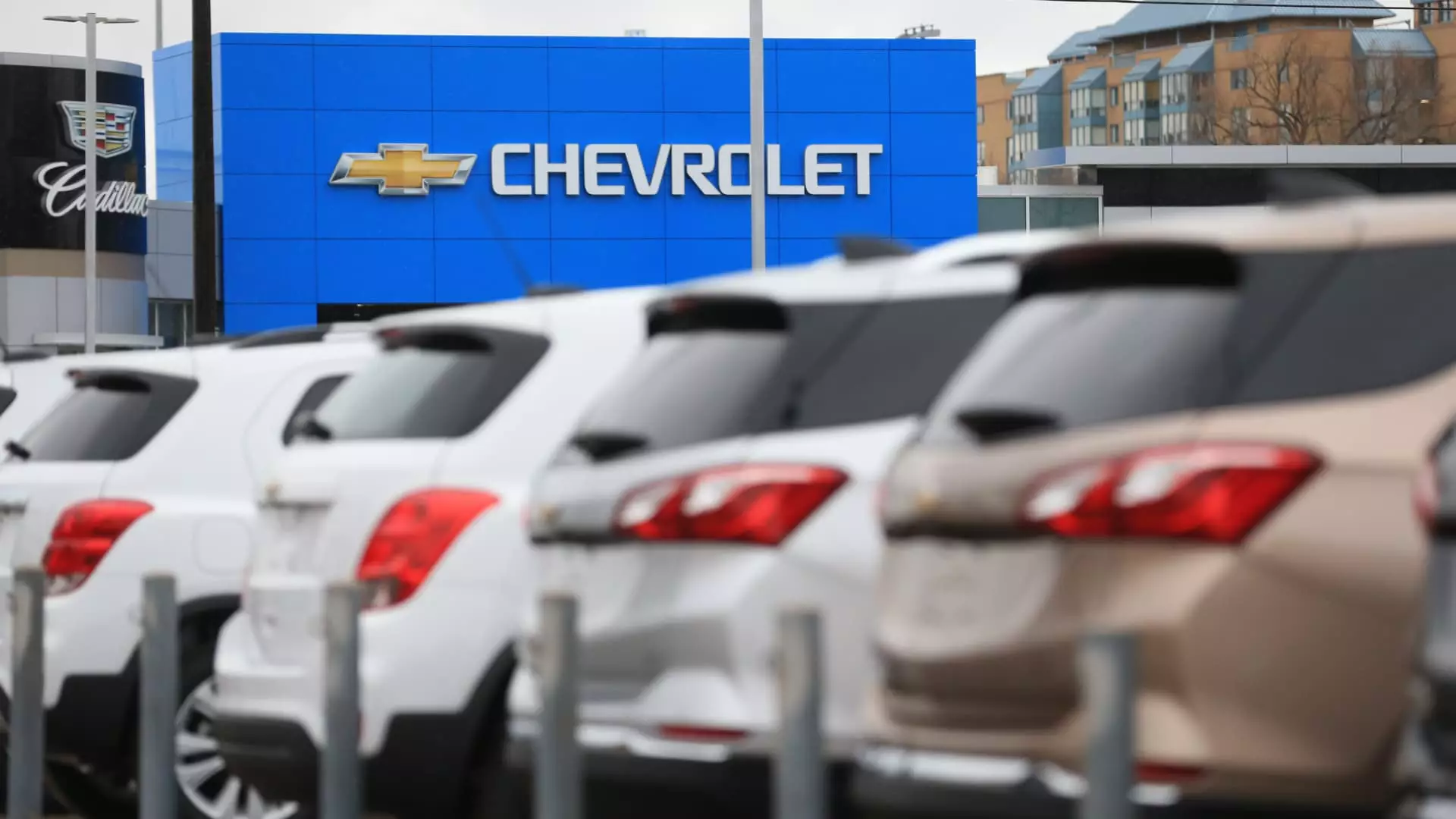As the automotive landscape in the United States faces the looming threat of significant tariffs, an unexpected twist has emerged: vehicle sales are surging. The recent report from General Motors showcases a staggering 16.7% growth in new vehicle sales compared to the same period last year. This effervescent sales spike occurs at a crucial moment as the industry braces itself for the forthcoming 25% levy on imported vehicles mandated by President Donald Trump. While the policy ramifications remain fraught with uncertainty, one thing is clear—consumers appear to be energized by the impending changes, willing to spend now to sidestep future price increases.
Electric Vehicles Leading the Charge
What stands out remarkably in GM’s success story is the evident consumer shift towards electric vehicles. The Cadillac Escalade IQ and Optiq have become symbols of this transformation, indicating that while consumers are wary of tariffs, they are also excited about innovatory vehicular technology. Such enthusiasm fairly highlights a pivotal moment in an industry long characterized by its hesitance toward radical changes. It’s invigorating to observe how consumers are prioritizing sustainability while making purchases, signaling an evolving mindset that goes beyond immediate concerns about tariffs and toward long-term commitments to green alternatives.
The Positive Playbook: Hyundai and Honda’s Gains
Following suit, other automakers such as Hyundai and Honda reported notable increases of approximately 10% and 5.3% in sales. This collective trend illustrates that the automotive industry’s potential for growth remains unbounded, even amid tariff-induced worries. The analysts initially speculated on a mere 1% annual increase. Still, these emerging figures suggest that market dynamics are far more favorable than anticipated. What’s intriguing is how these figures expose a market resilience; the anticipated economic shock from tariffs has ignited fiercer competition—an encouraging sign that consumers will stand by brands that adapt and innovate in the face of adversity.
Ford’s Struggle: A Unique Case
Conversely, Ford’s experience serves as an illustrative cautionary tale. Reporting a 1.3% sales decline, Ford’s struggles are not necessarily a direct result of tariffs but stem from strategic structural changes—namely, the discontinuation of the Ford Edge SUV. This not only underscores the complexities of the supply chain intricacies but also draws attention to the critical importance of consumer demand responsive to evolving preferences. Even amidst a slight decline in overall sales, Ford’s retail sales managed a commendable growth of 5%, buoyed by a remarkable uptick of 19% in March alone. This scenario prompts a consideration: how can automakers better align their offerings with what consumers truly desire?
Preemptive Buying and Market Dynamics
As observed by J.D. Power, the 13% retail sales increase reflects a strategic consumer response: buying now to sidestep potential future price hikes resulting from tariffs. The current atmosphere pulsates with consumer urgency, shining a spotlight on behavioral economics in action. As the auto industry gears up for potential additional tariffs, this growing trend assures that dealerships will continue to attract customers mobilized by a fear of rising costs. Understanding these dynamics proves pivotal in shaping future marketing and production strategies within the automotive sector. If automakers can harness this preemptive mindset, they may solidify sales figures beyond what the market originally predicted, rendering themselves more resilient to external pressures.

Leave a Reply